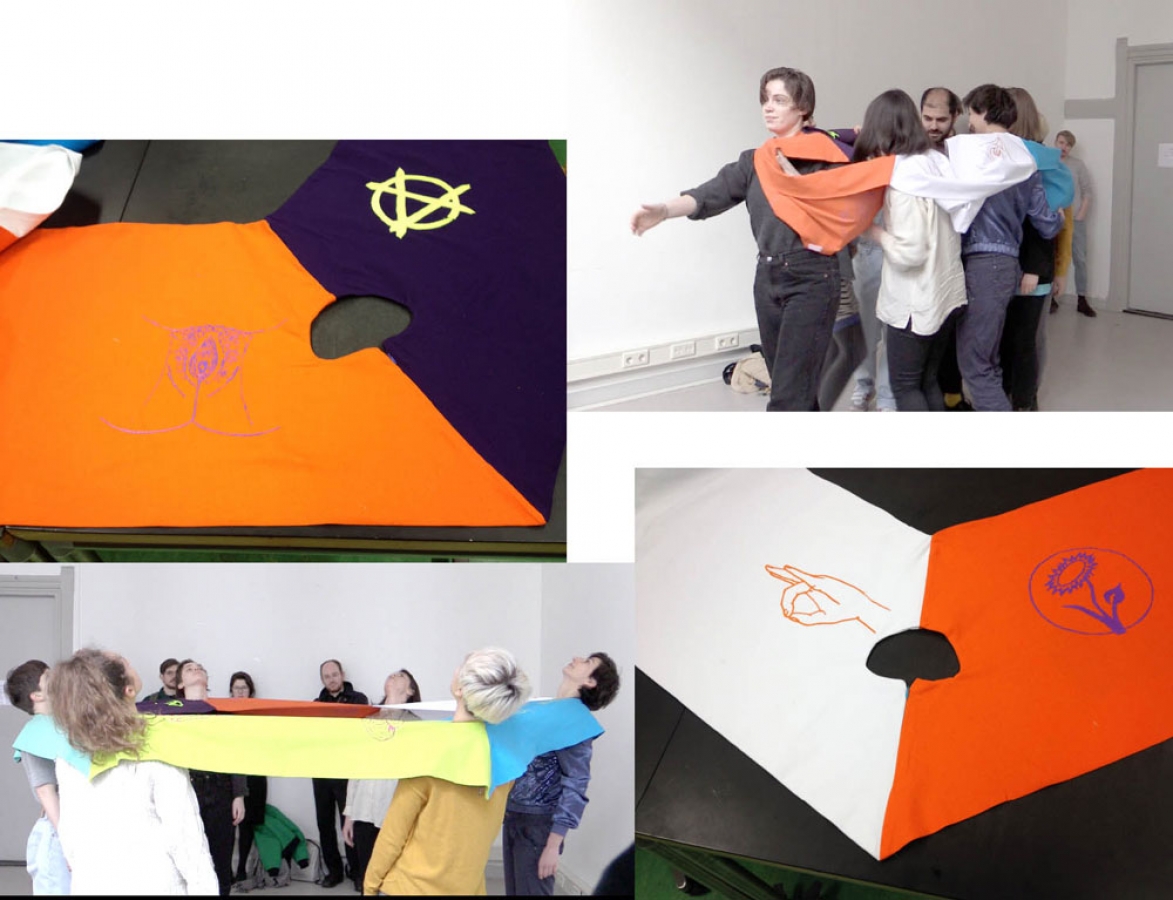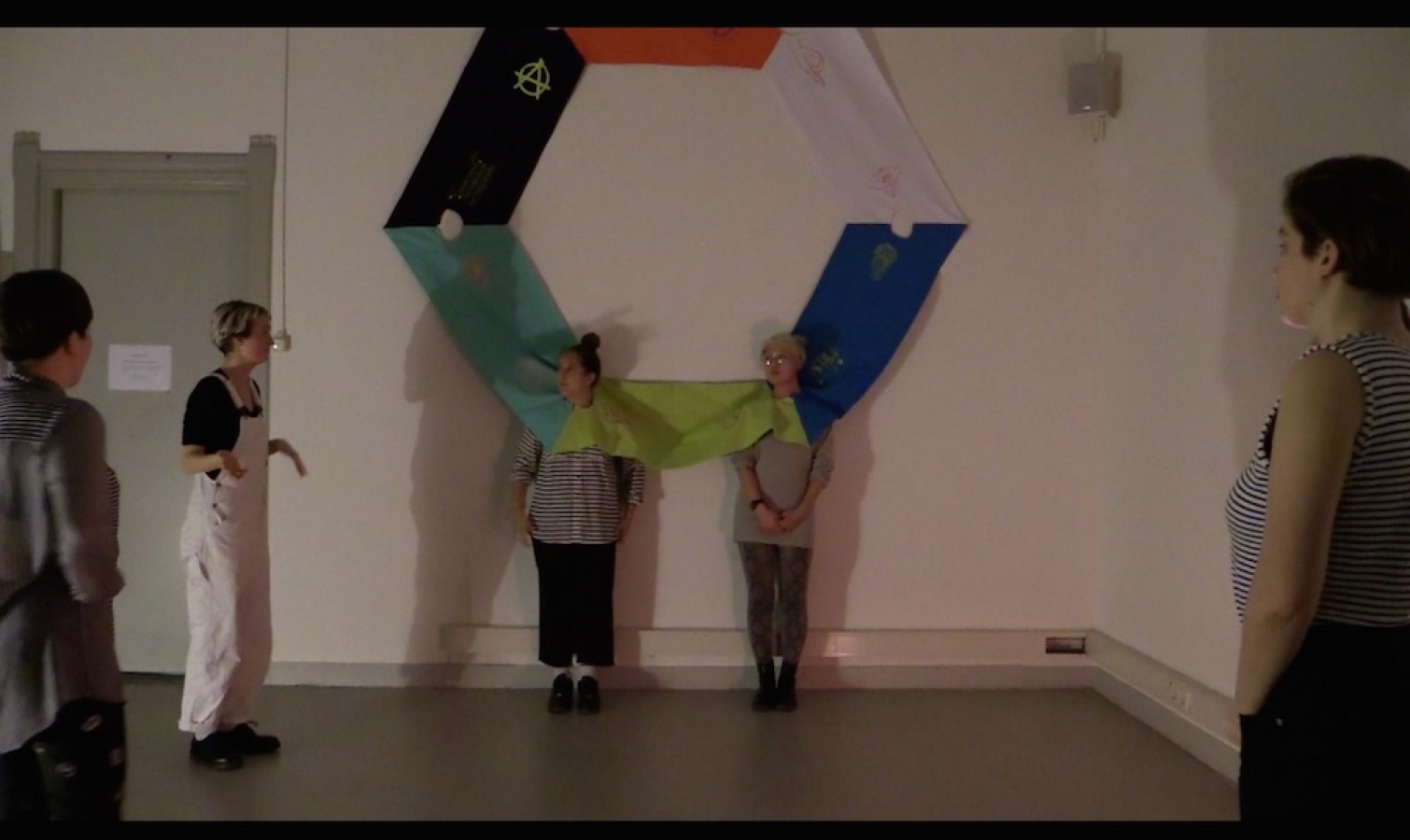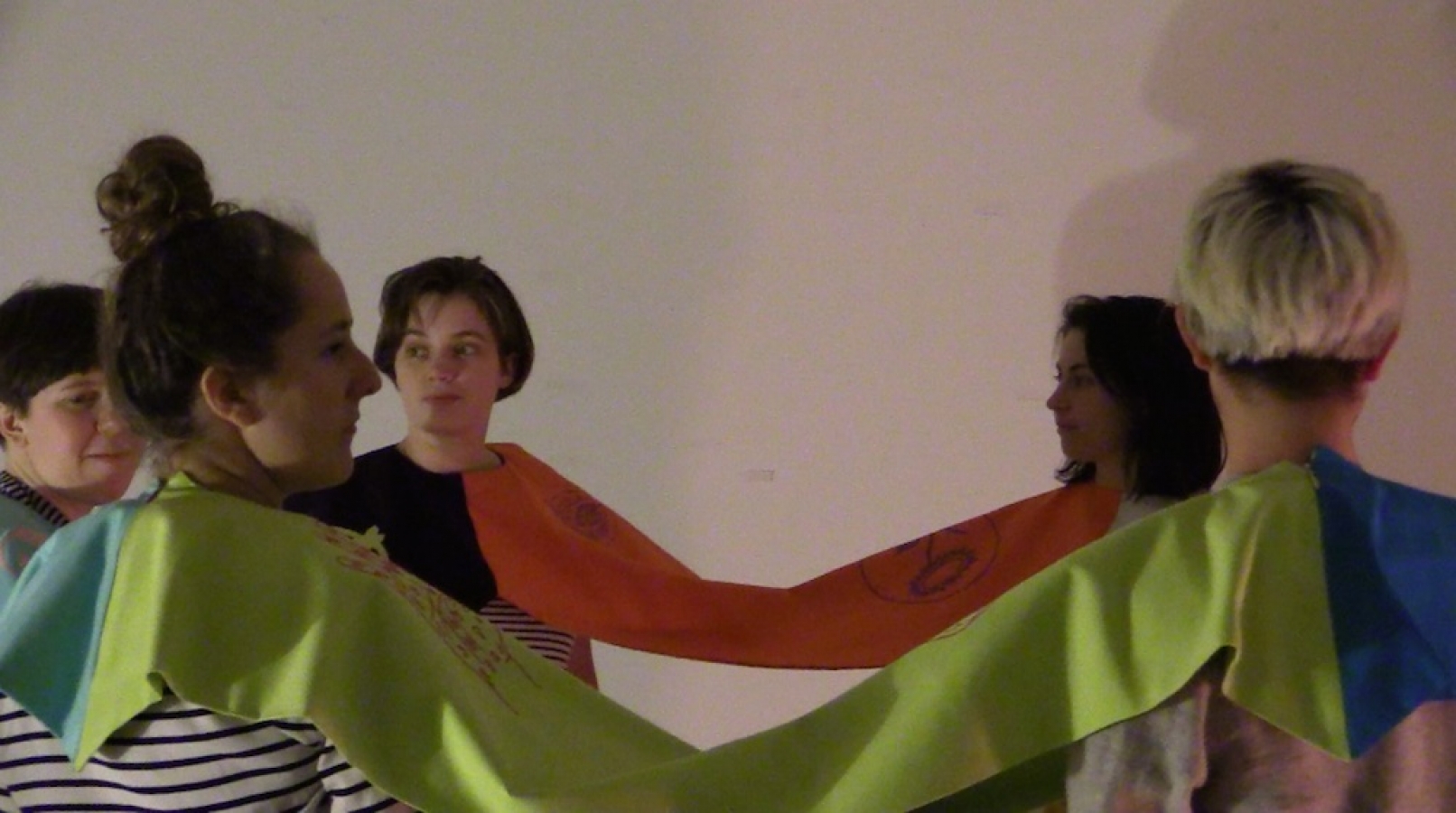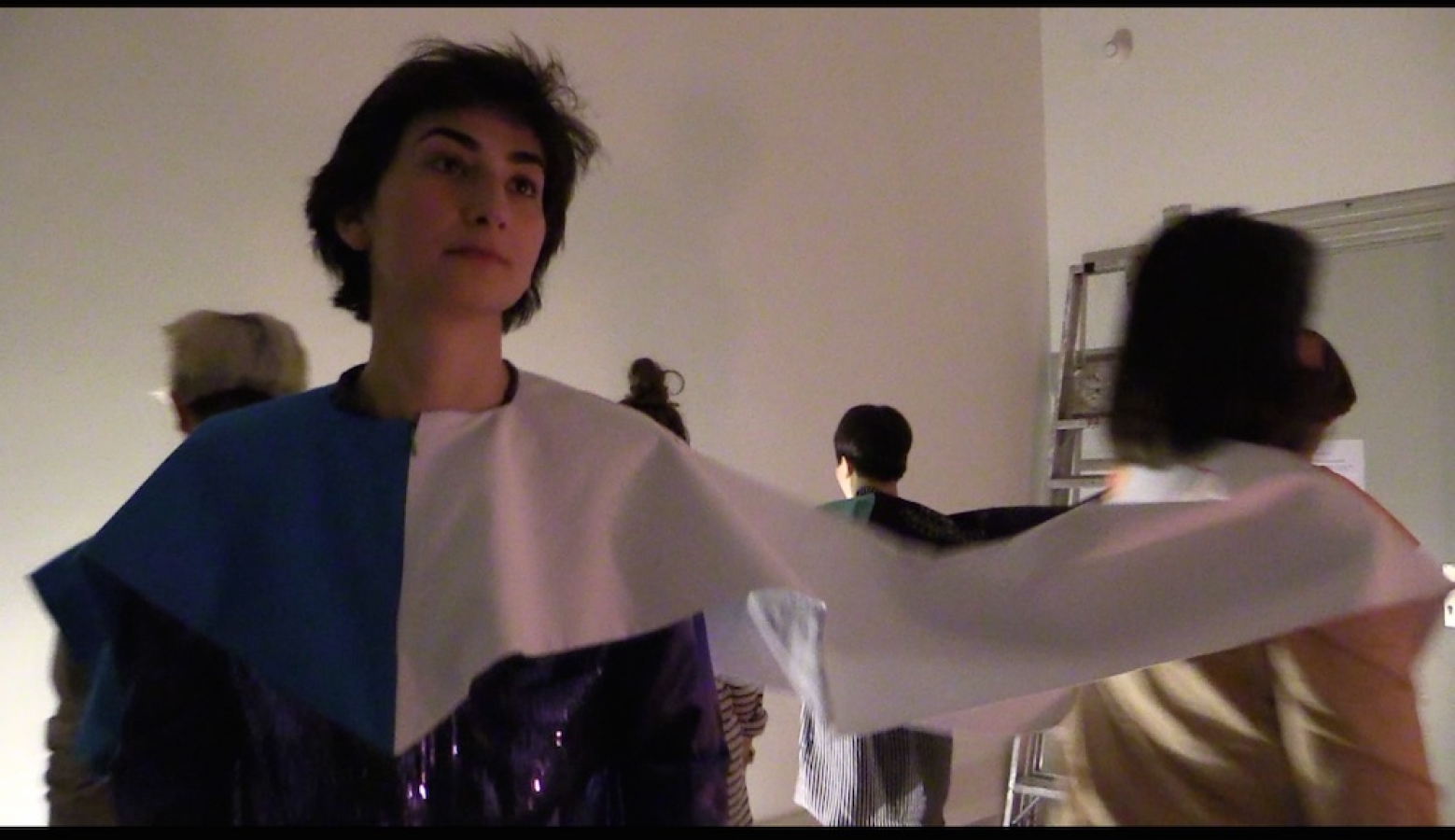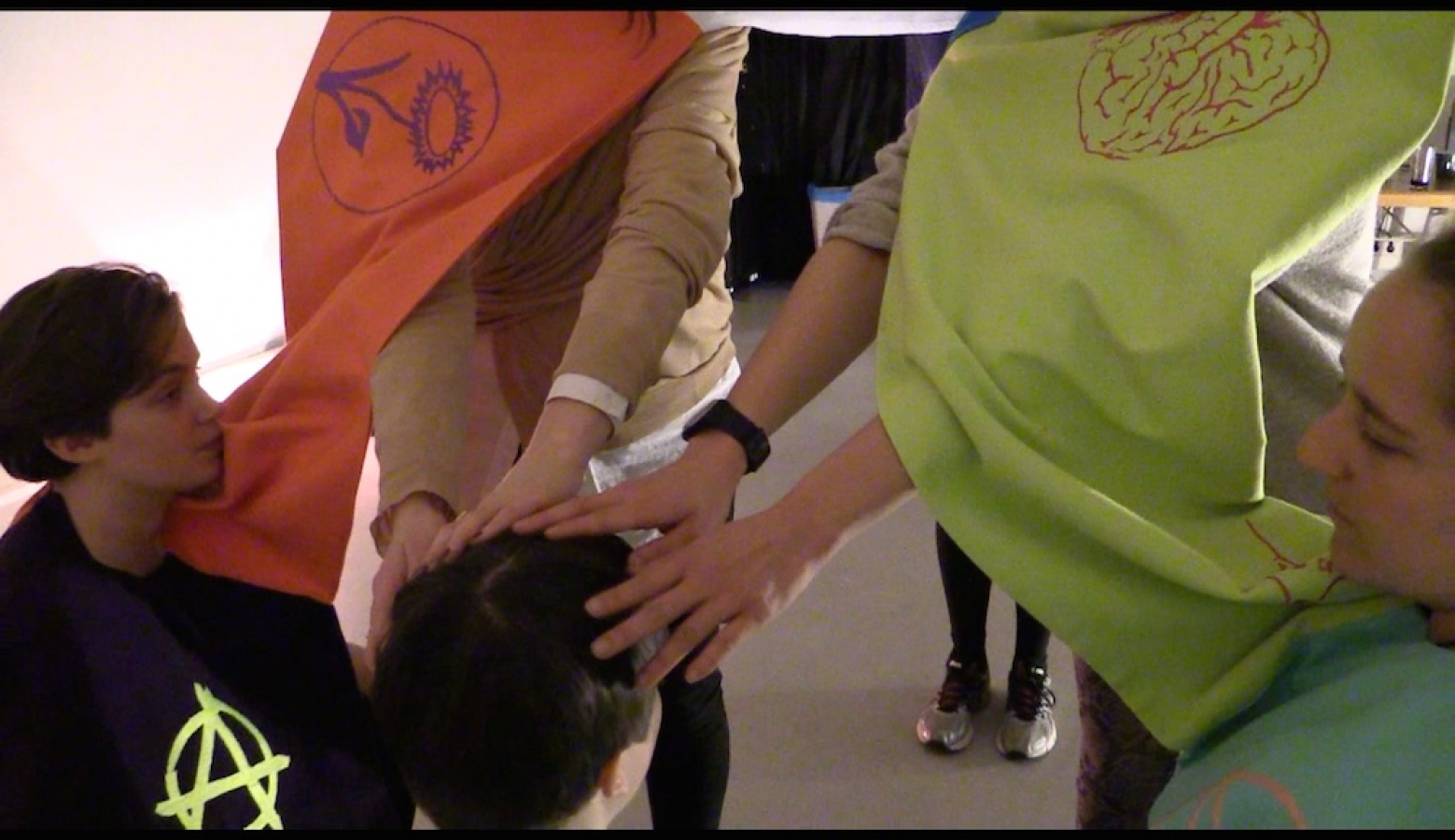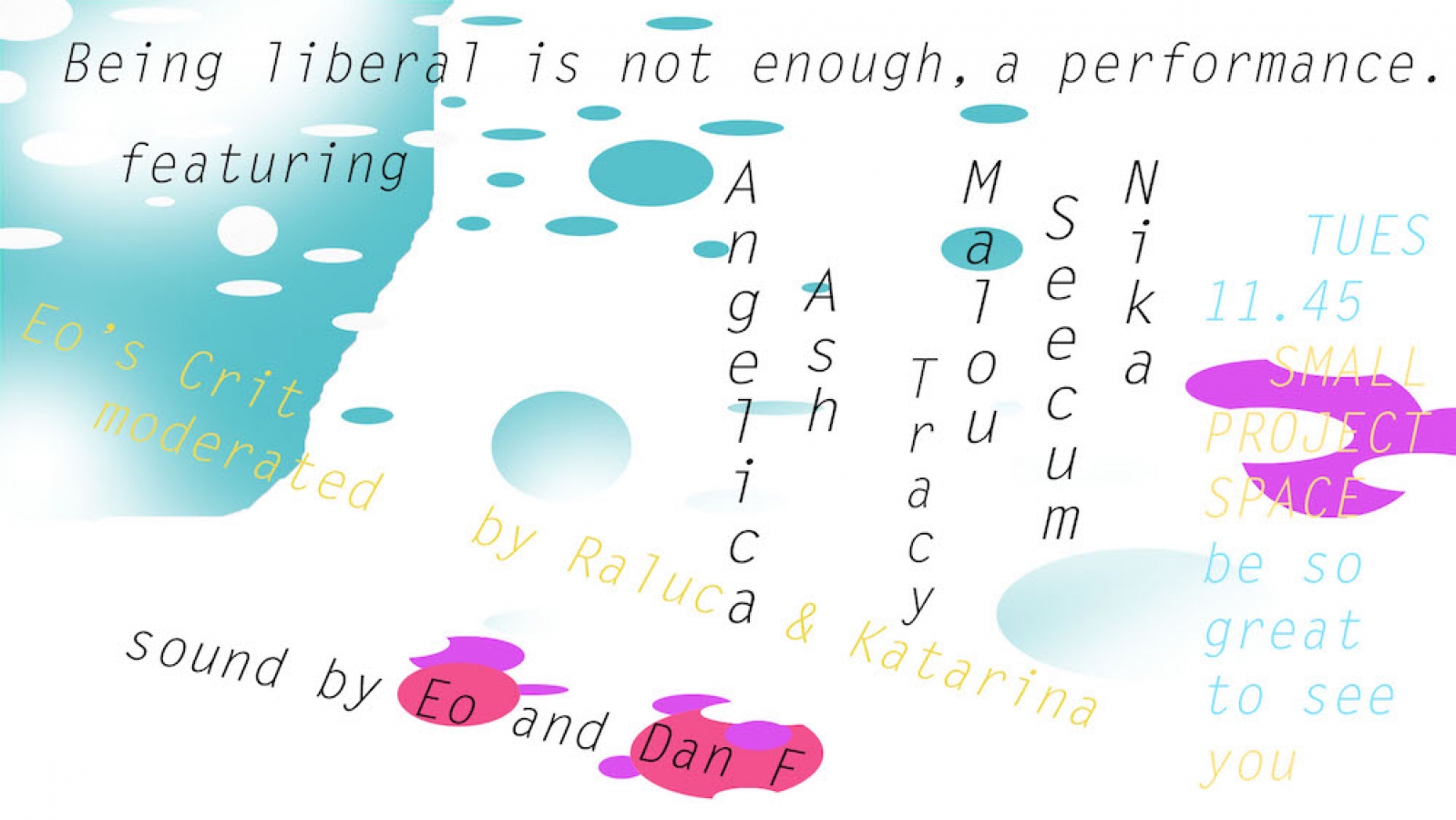Extract from performance. video stills below
Performance featuring Raluca Croitoru, Seecum Cheung, Angelica Falkeling, Malou Kortleve, Ash Kilmartin, and Natalia Sorzano. Sound by myself and Daniel Fogerty. Kindly filmed by Erika Roux.
Quick interview with Anni Puolakka. ANNI:So, your work is called, “Being Liberal is not enough”. And could you explain me what the work is in concrete?
EO: Yes of course, its a 12 minute performance. Both a sculptural costume and a performance. The object is activated at different points within the duration of it being in your space.
A: And how will it be activated?
E: There has to be 6 women who will be in the work, and there is an accompanying sound track. The sound is improvisational. The rhythm ebbs and flows it has a kind of jam feel to it. The rhythm is important to the participants who will move together at certain times, sometimes following strict choreography and at other times will improvise mirroring the music.
A: OK, can you talk about the materiality and the aesthetics of the costume?
E: Yes, so its in a hexagonal shape, and there is a neck whole for each person with a zipper. - that simulates that it can be both a garment and a banner that can be pulled down from the wall. It is a multicoloured piece, which is looking at this idea of a colour spectrum but also at the Gay Flag with the colours slightly off. And then it has these embroidered emblems, 12 in total which contain both fictional and nonfictional symbols.
A: Why did you make this work?
E: I made this work through thinking about textiles particularly and trying to imagine a work that could be in conversation with Judy Chicago 'The Dinner Party', piece. I don’t usually work with textiles as such, but I was thinking about aesthetics of this early feminist work and wanted to make something that could speak to this epic feminist historical work. There is also an idea around protest, and people having these kind of dualistic believes that sit next to each other and rub up against each other and kind of complement and contradict each other. And the way that people find it hard to know what to believe in and what they do choose then becomes a strong aesthetic in the formation of their life.
A: So is this piece about Pluralism?
E: I hadn’t thought about that before, but perhaps. I’ll just talk through the choreography as I feel this is important. So the piece starts on the wall and there are two people in it with the textile attached to the wall, and they stay there for 5 minutes or so. And then various performers will be in the room and the two attached to the wall pull down the piece and they one by one they complete the hexagon. And collectively they have this kind of Constantine or this accordion like movements where they come in and go out and at these points the symbols disappear from the stretching of the fabric. You can see them at times and at others you can’t. And based on where the work it being shown different choreography will apply. It is to do with mapping the space and drawing the architecture of the space and traversing it together. Within the choreography it reaches a point, where due to the hexagon falling around the performer necks, they move around on their own accord, which makes them become entangled together, which is also quite aggressive and has this strangulation moment. It is also borrowing aesthetics of utopian cults. Its looking at those sentiments.
A: What is your standpoint in relation to these believe systems and the friction that is caused by them? E: Just that we are living in a world of cultural appropriations and people don’t vote, don’t feel an affinity to things. But still have extreamly maticisious ideas of whom they are as an individual. I don’t know if I have a stance, but maybe its this kind of nothingness, yes that is part of it, or a not knowing where to place yourself.
A: So is it about being confused together?
E: Yeah, or A political. Vs bodies in space, and occupying space and how protest operates. It is a lot of the time to do with your physical body standing next to each other, and around banners and moving together.
A: And do you have to know what your doing when your protesting?
E: Do I?
A: I’m wondering about this question of knowing….or not knowing. I guess because often the things that are happening in the world are so complex that you often feel a bit helpless, in whether you understand anything about them or not. So that might function as a kind of block for doing, because you feel that you can’t do anything because you don’t have enough knowledge.
E: Yeah, and its also in communication with how the Internet works and how the way in which information is being shared has changed over time.
A: But, I’m wondering about that question of whether or not to protest if you don’t feel comfortable with your level of knowledge. Is this piece maybe proposing that you should protest, or go out there anyway? E: There’s one point I haven’t mentioned which is at the end of the performance other people are then invited to be involved in the hexagon. So the performers hold out their hands offering, and they pull people into the centre. And that creates this more concrete barricade of movement. But I don’t know if I am suggesting an alternative, I think a confusion is in there. I’m not totally sure.
A: And one more question quickly. Do you see this piece being taken elsewhere from perhaps an art specific context? Public space or…
E: I think it would work really well walking through any space.
